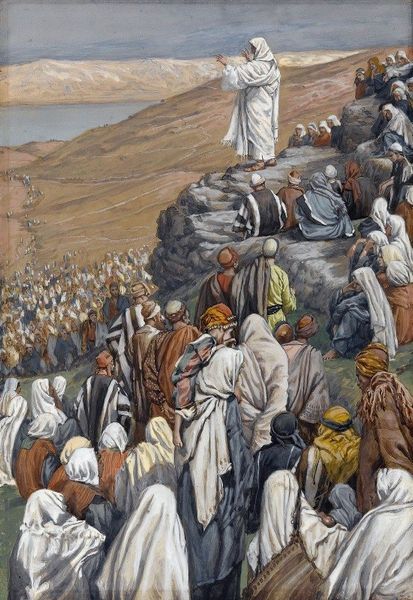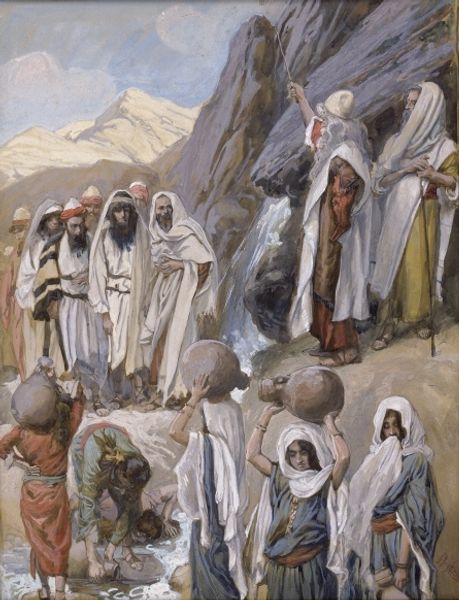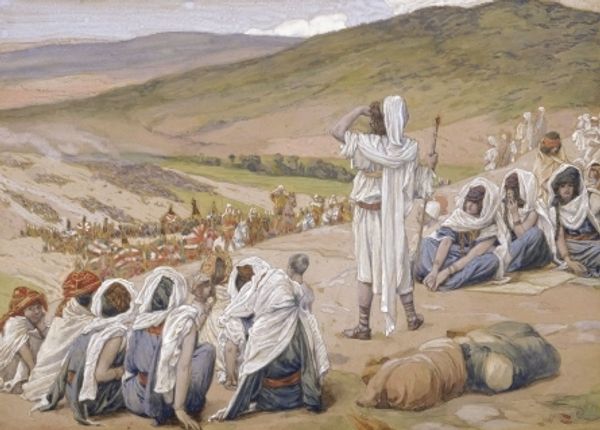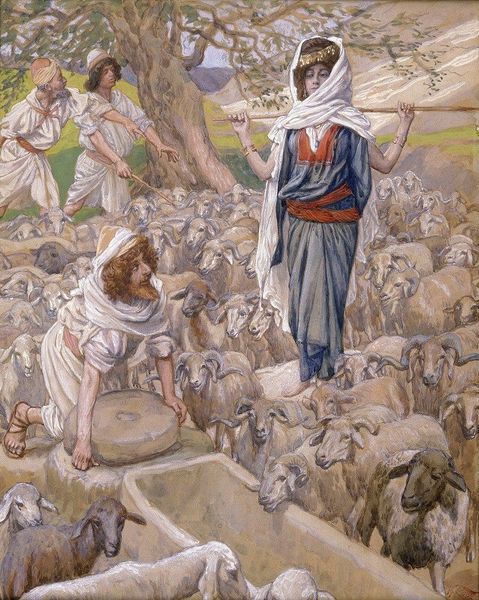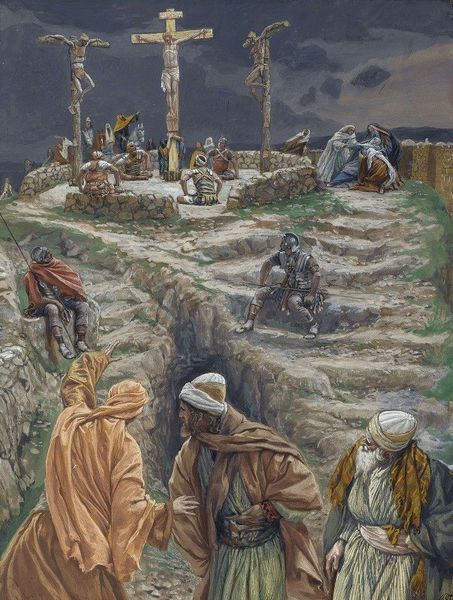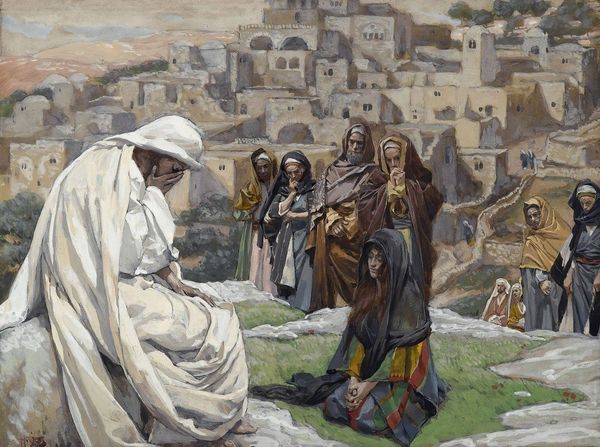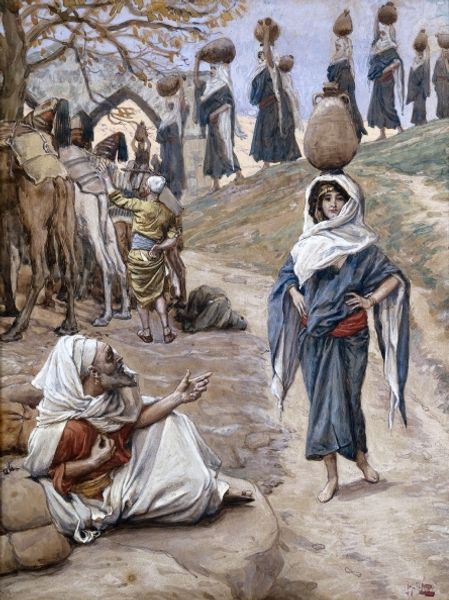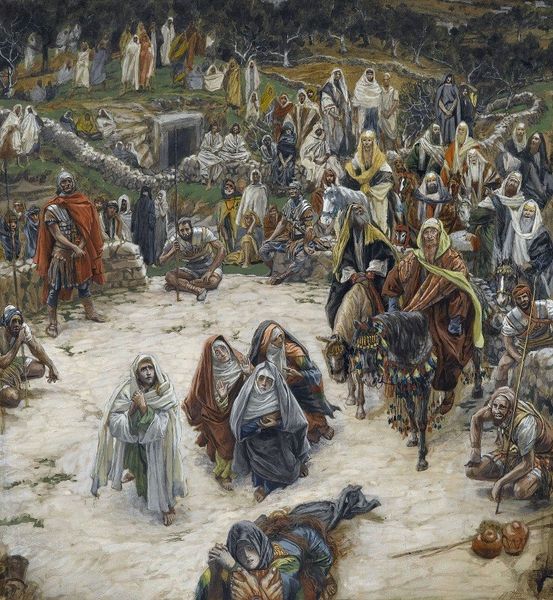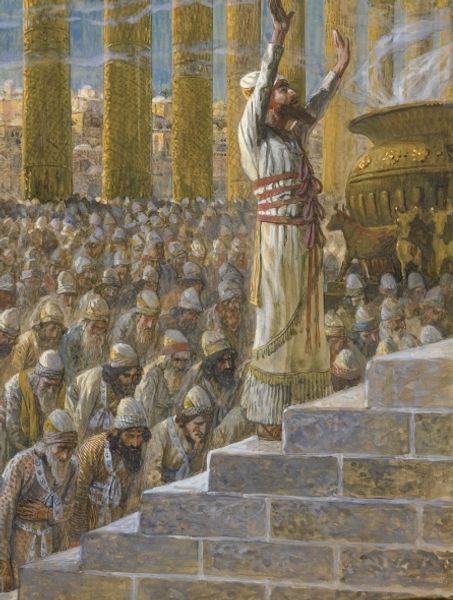
Copyright: Public Domain: Artvee
Curator: Here we see James Tissot’s "The Brazen Serpent," oil on canvas, dating from approximately 1896 to 1902. What are your initial thoughts on this rather dramatic piece? Editor: The composition is striking. The pale colours evoke this sensation of dust, and heat. It reminds me a bit of theatre; the figures seem to be striking poses, reaching upwards toward this gleaming, serpentine form. Curator: It's interesting that you note the theatricality. Tissot was working during a period where biblical narratives were often presented with a heightened sense of drama and emotion, particularly in academic art. Tissot certainly presents this biblical story in his very realist manner, a history painting that borders on genre painting. Editor: Absolutely, the materials used would be interesting to research, because of its academic associations it also evokes the production process, the relationship of the artists workshop, pigments, canvas making etc. Also, what does the serpent actually MEAN in this context, this is a symbolic rather than physical item and invites examination in its materiality. Curator: The image itself is an interpretation of a passage from the Book of Numbers, where Moses erects a bronze serpent on a pole that grants healing to those who gaze upon it after being bitten by venomous snakes. Its an odd symbol of healing – and, obviously, loaded with socio-religious implications, particularly during the Victorian era. Editor: Its intriguing how Tissot translates this almost surreal scene into something that feels almost like an observation, as if we were observing this holy moment happening somewhere within the ancient Near East. Curator: And of course it was not as if Tissot didn’t appreciate that very issue. This work would have been presented to a public already familiar with the symbolic associations, it is quite powerful when put within that social history, do you agree? Editor: It is the cultural weight the artist places on materiality here I find intriguing. This image, crafted from ground pigments, refined linseed oil, is creating not just form but is re-presenting the making of the biblical artifact. It speaks volumes about faith, production, and interpretation. Curator: I agree completely; it invites ongoing analysis and interpretation across disciplines and I suppose as observers we add more and more with the passing of years. Editor: Yes, absolutely; what a fascinating interplay of materials, method and meaning to carry on considering!
Comments
No comments
Be the first to comment and join the conversation on the ultimate creative platform.
